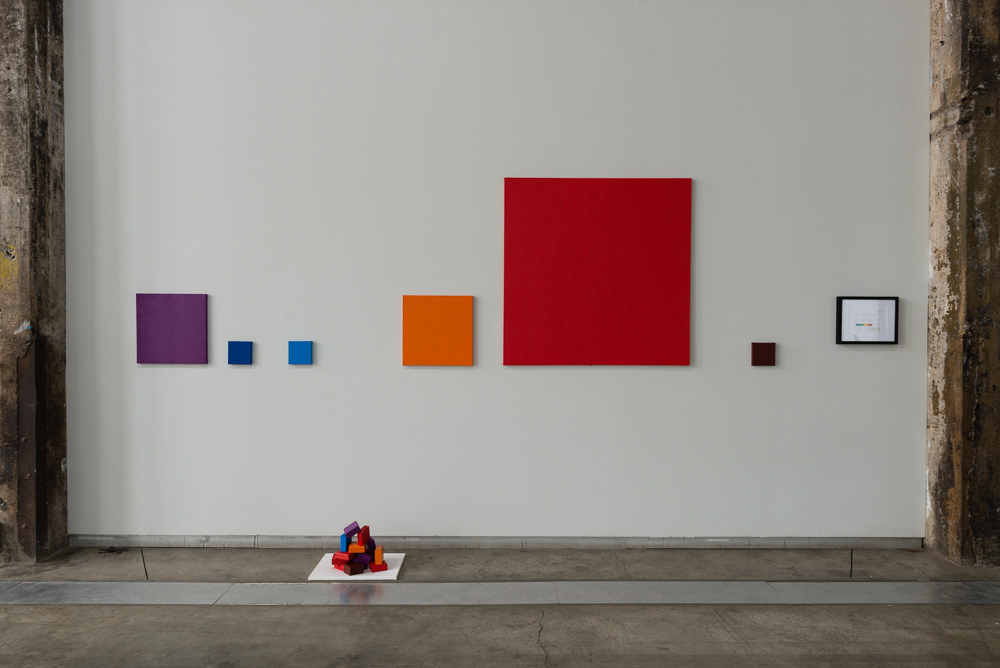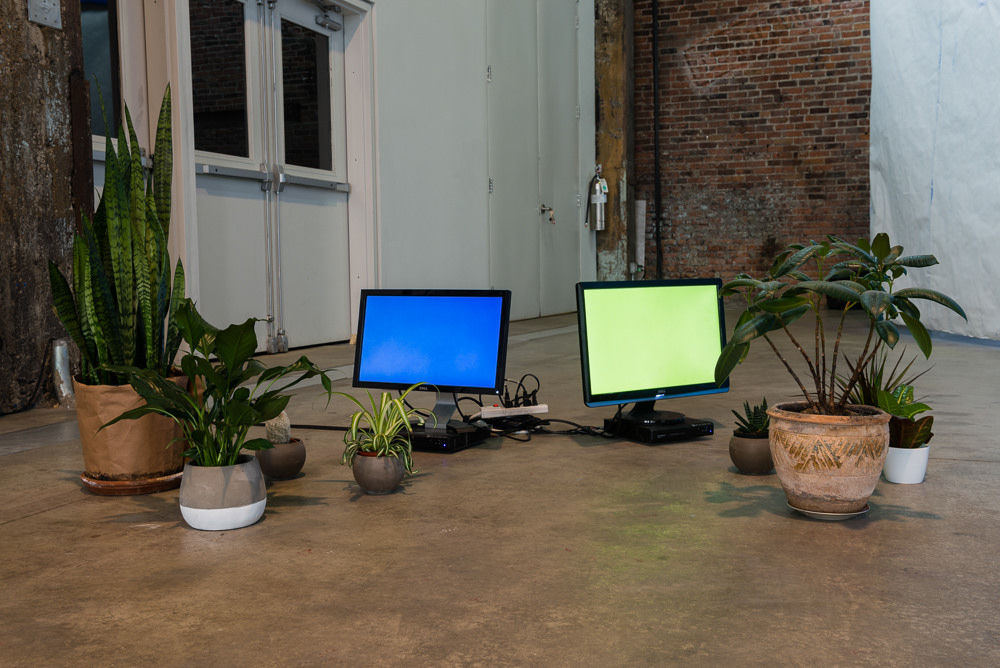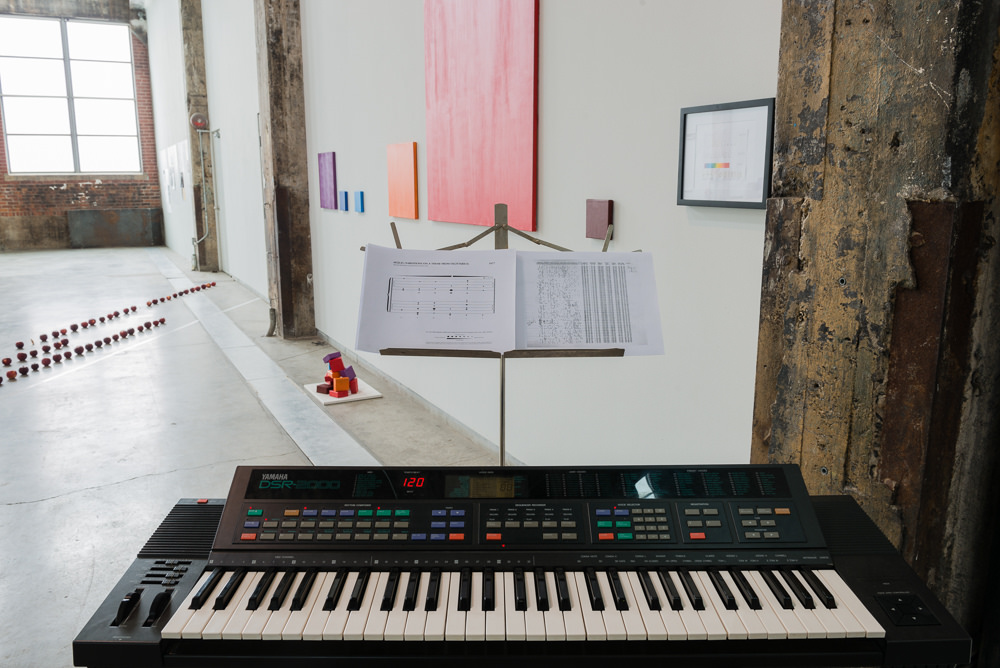The House of Dust by Alison Knowles
INHABITED BY BIRDS AND FISH
Jonathon Keats, Mixed Signals, 2011-17
Mixed Signals considers communication with the non-human “other,” by engaging with plants and potential extraterrestrial life-forms. Keats carefully navigates the traps involved in such endeavours, such as the inevitable tendency to anthropomorphize how these radical “others” might perceive, empathize, or react.
Art Across the Cosmos : 6EQUJ5 (The Artof Sagittarius), 2017
score: drawing and collage on paper, 5.9 x 7.4 in, framed paintings: 6 acrylic paintings on canvas (various dimensions) sculpture: 16 pieces of wood (various sizes), acrylic paint
6EQUJ5 (Variations on a Theme from Sagittarius), 2017
musical score, archival data, synthesizer
Intergalactic Artgram (Arecibo), 2017
printed postcard, 8.5 x 5.5 in (folded)
Thinking about translation, interpretation, and the richness of human-extraterrestrial miscommunication, Keats takes the absurdist approach of combining conceptual art and astronomy. While the existence of extraterrestrial life and intelligence has long been taken for granted by most scientists, it remains unclear if any signals from outer space have come from aliens, whether they contain information and meaning, and if so of what nature. Working with the famous “Wow! Signal”—the sequence 6EQUJ5, showing an unusually powerful narrowband signal emanating from Sagittarius detected by the Big Ear radio telescope in August 1977— Keats asks, what if the content of this emission was an attempt to communicate abstract art or music rather than scientific data? Keats transposes this data into visual and sound art within a frequency range and scale perceptible for humans. While Keats’ works show translations and interpretations taking shape as paintings, sculptural objects, and a musical score—to be played and interpreted by visitors on the provided synthesizer—visitors are also invited to send artworks back into outer space. By using postcard templates addressed to the Arecibo Observatory, visitors can translate existing or self-created artworks into a signal that can be transmitted into outer space by radiotelescope.
Jonathon Keats,TV Dinner for Plants, 2011
various houseplants, screens, video (3 minutes, loop)
Ever since the establishment of agriculture as a fundamental necessity to sustain human life, our relation to plants has been utilitarian: we nourish them so that they feed us. We assume that they are unthinking and inert. Recent discoveries in the field of neurobiology and the physiology of plants are increasingly challenging these ideas, shedding new light on the extraordinary capabilities and complex interior lives of plants—and forcing us to think in new terms about how we treat, use, and interact with plant-kind. TV Dinner for Plants is an offshoot of a larger project by Jonathon Keats, The Photosynthetic Restaurant, in which he attempts to establish communication with non-human others through the cultural and social phenomena of cuisine and dining. Through research into photosynthesis and plant physiology, as well as classic cookbooks, Keats has created various menus for plants by mixing different wavelengths of light: the work offers photosynthetic cuisine to plants based on an assortment of recipes with different culinary traits.
Jonathon Keats was invited by Daniela Silvestrin, exhibition curator and participant in Art by Translation in 2017.


